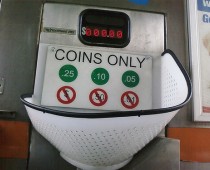My friend Irene asked how long the proposal process took, so let's talk for a moment about the timeline.
I suggested the idea to Jim in January 2011. Since January to March is my busy sales season with Delaney, I didn't immediately come home and start on the proposal. I probably began working on it seriously in March and emailed it to him on April 13. The following week I received an email from Luana Mitten, Editor-in-Chief at Rourke, saying they were interested in the proposal with some validation that I'd done a pretty good job on the proposal. Jim emailed the next day and affirmed his interest in the project. However, at the time they were working on their fall line of books and needed to wait until they were finished with those projects.
In July, Luana emailed me again to say the biography series was a definite go. She asked to set up a phone conversation. When I didn't hear from her again by August, I emailed to be sure I had not missed something. She responded that they were finalizing the new list and the biographies were still on it.
And here's where it got interesting. Remember we talked last week about publishers having personalities? I should have been paying closer attention. The rest of her email said she they were thinking about a collection of people they could use photos to illustrate and a second collection of historical people. She would send me the titles later that week. The were also looking to come up with a collection that would support both social studies and Common Core, and be attractive to teachers, as well as librarians. Notice that last line? They are paying attention to the classroom side of the business.
In September, senior editor, Precious McKenzie contacted me about working on the series. She offered me three Little World Biography Titles of 24 pages each. She gave me my choice of titles from these:
Well, of course, I said yes. I picked Frank Lloyd Wright, Mae Jemison, and Laura Ingalls Wilder.
Sonia Sotomayor; April Holmes, Joe Acaba; Muhammad Ali; Mae Jemison; Michael J. Fox; Walt Disney; Frank Lloyd Wright; Bill Martin, Jr.; Ezra Jack Keats; Laura Ingalls Wilder; Maya Angelou.
So what happened to my proposal? The folks at Rourke took the idea, tweaked it to make it fit their publishing personality and gave me the opportunity to be part of it. I was thrilled, but my adventure with their personality was not over yet.
At this point, I had been writing for State Standards for about three years. State Standards books are written to very specific informational guidelines--they want the exact standards the students must study included in the books--and they want it written at the exact reading level those students need. So I'd been writing in a tight box for quite a while.
My original proposal to Rourke was based on the need for low level biographies that kindergarten and first graders could read themselves. But Rourke's books are much looser in construction. They market their Little World line of books for kindergarten to second grade, but the reading levels on them usually fall in the second and third grade range.
The first manuscript I sent to Precious was still written in my original proposal mindset. We worked back and forth on a few things. Wright's life is not exactly first grade material. Once we had worked through some of this, she sent it to other editors in the office for their perspective. In November comments came from one of them saying I needed to jazz it up a bit, increase the writing craft to keep kids engaged. That the sentence structure was too repetitive, and needed to have more variety.
She was exactly right. It would have been the right manuscript for State Standards, but I had missed Rourke's personality. So I took a deep breath, relaxed, and rewrote. This time the results were just right.
I turned in the final manuscripts in January. I'm still waiting to see the finished version with the cover. The books will be out in the fall. It's been a grand experience and a definite lesson in publisher personality.





.JPG)
























